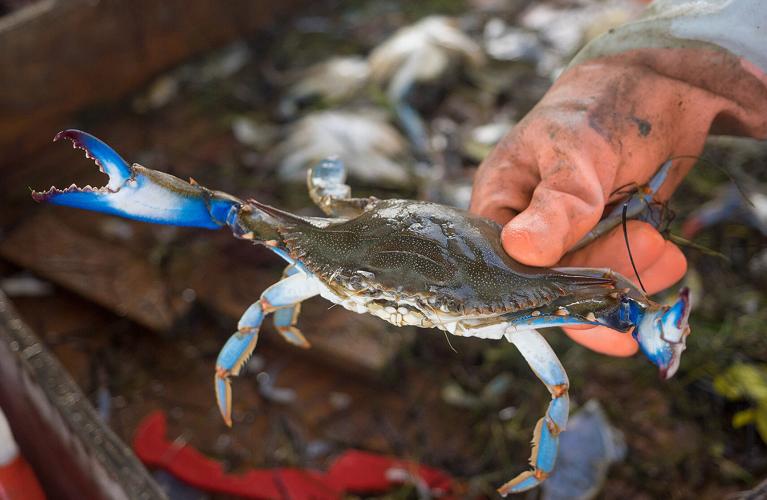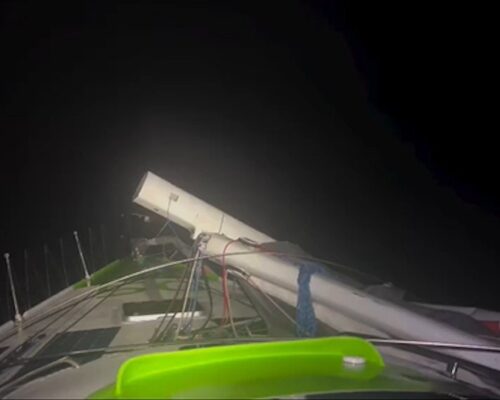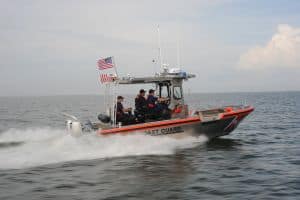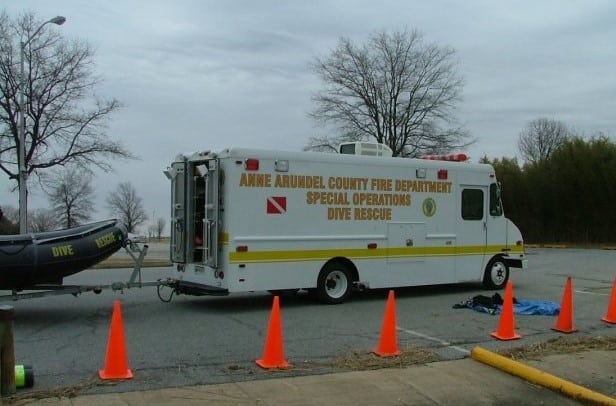By Timothy B. Wheeler & Jeremy Cox, Bay Journal News Service
The Chesapeake Bay’s blue crab population has recovered somewhat from last year’s record low abundance, new data show, but not enough to dispel worries about the future of the region’s most valuable commercial fishery and most popular recreational fishery.
The annual wintertime survey by the Maryland Department of Natural Resources (DNR) and Virginia Institute of Marine Science (VIMS) found an estimated 323 million crabs Baywide. That’s up more than 40% from last year’s tally of 227 million crabs, the lowest in the survey’s 33-year history.
The survey likewise detected a big jump in the number of spawning-age female crabs, from 97 million in 2022 to 152 million this year. They are now well above the threshold biologists say is the absolute minimum needed to sustain the population.
But the overall crab population is still significantly below the long-term average, the survey found. And while the estimated number of juvenile crabs increased slightly—from 101 million in 2022 to 116 million this year—it remained well below average for the fourth straight year.
Scientists say that the continued weak breeding of new generations is an ominous sign for the future of the Bay’s signature crustacean.
“Not exactly good news,” said Glenn Davis, a Maryland state biologist, as he presented the findings May 18 to a regional panel of fishery managers and scientists. “This is still really bad.”
Since 1990, crews from both states have taken the measure of the Bay’s crab population by sampling a total of 1,500 spots around the Bay and its tributaries. From December through March, they tow a dredge along the bottom and record the size and sex of those crabs found buried there after cold water temperatures render them largely inactive.
The results are an annual barometer of the health of the blue crab population, and they have been usually reliable at predicting how many will be available to catch and eat through summer and fall.
This year’s survey suggests there will be a greater abundance of crabs through spring into summer than was seen over the same period in 2022.
The survey demonstrates that the population is “nowhere near collapse,” said Rom Lipcius, the VIMS crab researcher who oversees Virginia’s half of the survey. But he said he continues to worry that the relatively healthy numbers of breeding-age females aren’t resulting in more young crabs in the count.
Lipcius said the disconnect might be explained by the regulatory system itself. When the crabbing season opens in the spring, a bonanza typically follows.
“We’re hitting them hard before they reproduce,” Lipcius said.
As fishery managers weigh whether to further clamp down on crab harvesting, one of the Chesapeake Bay’s leading conservation groups urged a careful approach.
“Because the blue crab population fluctuates annually due to a variety of factors, we hope the improvements observed this year continue over the long term,” said Chesapeake Bay Foundation scientist Chris Moore.
The organization called on officials to maintain measures to protect adult males and consider additional actions, such as requiring tags to be affixed to crab pots.
Last year, Maryland watermen faced their first-ever bushel limits on male crabs in late summer—a response to the 2022 survey finding them at their lowest level in three decades. DNR also ended the commercial season two weeks early on Nov. 30 and reduced the allowable catch of females from July through October. Even recreational crabbers got cut back to only one bushel a day, regardless of sex, down from two daily before.
The Virginia Marine Resources Commission also imposed new restrictions on commercial harvests from Oct. 1 to the end of the season on Nov. 30. Those reduced catch limits continued for the first six weeks of the 2023 season, which began in April.
The 2022 commercial harvest turned out better than expected, despite the bleak survey results and the tightened crabbing rules. Baywide, watermen landed 42.1 million pounds of crabs last year, 15% more than they had in 2021. But that was still well below the long-term average harvest of 60 million pounds.
The uptick last year was “not all that unexpected,” said Genine McClair, DNR’s blue crab fishery manager, because the number of juvenile crabs seen in the 2022 survey was slightly more than the year before. The harvest picked up in late summer and fall as those youngsters reached legally catchable size.
“What we hope was that [with] the management actions we took last year…we didn’t harvest as much as we could have,” she said.
Maryland’s one-bushel daily limit on recreational crabbing from a boat remains in force this spring, but McClair said no decision has been made yet on whether to tighten commercial harvest limits again on female crabs or to reimpose a cap on the male crab catch. Any changes would be announced before July 1, she said.
For his part, Mark Sanford, a waterman based in Cheriton, Virgina, doesn’t put much stock in the annual crab survey. Like many in the seafood industry, he points to the potential undercount of juveniles because the survey boats can’t reach the shallows.
“But we have to go by that [dredge survey] because of the fact it’s been going on since [1990], and it’s the only science that they have,” Sanford said.




